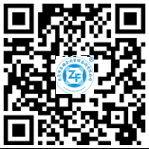Contact Us
Contact: Miss Luo
Phone:13798904733
18928298220
Tel:0769-22805501
QQ:691743147
Eamil:dgzf@dgzf0769.com
Address:Room 104, Building 6, Haiyi Palace Shangdu, No. 66 Hujing Avenue, Houjie Town, Dongguan City, Guangdong Province
The concept of this standard and its requirements is based on "hazardous substance-free products and processes if effectively integrated with management principles". This specification is attached to the ISO9001:2000 version of the quality management system (QMS) framework, with a view to achieving HSF goals with complete, systematic and transparent process management and control. This document is based on EIA/ECCB Standard 954 Standards and Requirements for Electrical and Electronic Devices and Products Free from Hazardous Substances as a guide for manufacturers in fulfilling HSF and user requirements, which may include regulatory requirements such as the requirements of Directive 2002/95/EC of the European Parliament and Requirements of the Committee of 27 January 2003 on Restriction of Use within the Restriction of the Use of Certain Hazardous Substances in Electrical and Electronic Equipment (RoHS) Directive 2002/96/EC of the European Parliament and the Committee of 27 January 2003 on Requirements of the Waste Electrical and Electronic Equipment Directive (WEEE).
Notice:
Legislation exists or is pending around a number of trials worldwide that require the elimination of a specific list of designated hazardous substances (HS), including lead, mercury, cadmium, hexavalent chromium, polybrominated biphenyls (PBB), and PBBs from a wide range of products ether (PBDE). Therefore, producers and users of electrical and electronic devices must be able to know that any of their products are free of Hazardous Substances (HSF); or, if the product is not HSF, display the HS quantity value.
The process used to identify, control, quantify, and report the HS content of electronic or electrical components, or an element in it, which must be defined and understood in sufficient detail to warrant a product's HSF status to all interested parties. This process must be properly documented and handled in a controlled and consistent manner to facilitate verification of compliance with applicable requirements and regulations; allow for efficient and effective compliance checks; producers and many at various locations It is possible for the user to implement it; and allows for a consistent tuning and implementation method. Most importantly, they must minimize technical barriers to trade in products worldwide.
introduce
The purpose of this document is to enable:
1. Product manufacturers, suppliers, repair and maintenance personnel can develop processes to identify, quantify, control, and report the content of hazardous substances in products; and
2. Product customers and users to ensure the HSF status of the product and its various processes.
1 Scope
This specification defines the requirements needed to establish a process for the identification and control of products contaminated with hazardous substances. This document defines the requirements for testing, analysis, and other processes to determine the content of hazardous substances in the event of hazardous substances contaminating products, and can be communicated to customers. The documentation process should be within the organization's business and quality management system.
The requirements of this specification do not include those included in ISO 9001.
2 Standardized Reference
ISO 9001:2000, Quality management systems - Requirements
ISO 10005:1995, Quality management — Guidelines for quality planning
ISO 10006:1997, Quality management systems — Guidelines for quality in the project management process
ISO 19011, Guidelines for Auditing Quality and Environmental Management Systems
IEC QC 001002-3, Regulations for Procedures, Part 3: Formal Approval Procedures
AS 9100, a quality system aerospace model for quality assurance during design, development, production, installation and maintenance
TL 9000, Quality Management System (QMS) Requirements
ISO 13485, Medical equipment — Quality management systems — System requirements for regulatory purposes
3 Terms and Definitions
For the purpose of this specification, the following terms and definitions apply.
HS Hazardous Substances means any raw material as listed in the WEEE or RoHS Directive and any additional user requirements such as Prohibited and Interoperable with Prohibited Substances.
HSF Free of Hazardous Substances means any reduced or excluded material as listed in the WEEE or RoHS Directive or other appropriate standard or regulation.
Information Service Provider means an entity or organization that analyzes, monitors, or provides information related to the design, acquisition, manufacture, maintenance or support of products whose lead content should be known.
Can indicate that certain operations are permitted within the limits of this standard.
Product Consumer means an entity or organization that purchases a product for use or retail sale.
Product maintainer An entity or organization responsible for keeping a product in place and ready for use.
Product Manufacturer means an entity or organization that manufactures a product or set of products for which the content of hazardous substances must be known.
Product Repairer An entity or organization that repairs or restores a product after it has failed.
Product supplier means (a) distributing a product obtained from a manufacturer to subsequent consumers or users, or (b) integrating a processed product into a higher level product for subsequent consumers or use an entity or organization of a person.
Product User An entity or organization that uses its project when the product is in place.
Prohibited Substances Hazardous Substances are any raw materials as listed in the WEEE or RoHS Directive and any additional user requirements such as Prohibited and Interoperable with Prohibited HS.
Mandatory requirements that must be followed in order to comply with this standard shall be indicated.
It must be indicated that one of the options is recommended, other options are not excluded, or that certain actions are preferred but not required, or that certain activities are not recommended but not prohibited.

 简体中文
简体中文
